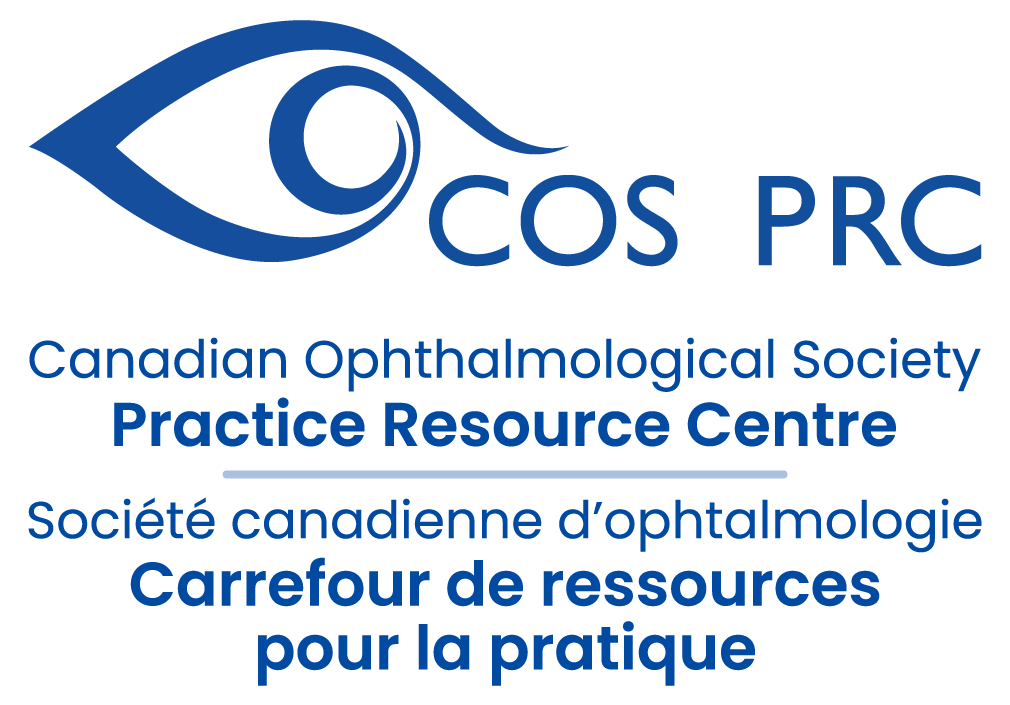Ocular Mucous Membrane Pemphigoid Course
Location: Virtual – access the course HERE
Mucous membrane pemphigoid (MMP) is a cicatricial autoimmune disease primarily affecting mucous membranes of the conjunctiva, oral cavity, nasopharynx, oesophagus and genitals. Ocular involvement occurs in approximately 80% of cases, highlighting the importance of early diagnosis to prevent irreversible damage and potential blindness.
Authors: Melissa Lu (MD), Fady Sedarous (MD, FRCSC), Mona Harissi-Dagher (MD, FRCSC)
Learning objectives: Upon completion of this module, learners will gain a comprehensive understanding of the pathophysiology, clinical signs, diagnostic and treatment principles of ocular mucous membrane pemphigoid (OMMP), enabling them to apply this knowledge in clinical practice.
Target audience: Ophthalmology residents and ophthalmologists.
World Sight Day – ROP Resource

This year, World Sight Day (October 10, 2024) focuses on children’s eye health around the world. We want to highlight and review the existing guidelines for the screening of retinopathy of prematurity (ROP). These guidelines, developed by key organizations in ophthalmology, aim to ensure early detection and management of ROP in preterm infants to prevent life-long visual impairment and blindness. Please note that this review reflects current clinical recommendations from leading bodies and is not a COS policy or official guideline.
Screening Eligibility
Screening is recommended for infants at the highest risk of developing ROP. The criteria include:
- Gestational age: ≤30 6/7 weeks
- Birth weight: ≤1500 grams
- Neonatal risk factors: Infants born at >1500 grams or >31 weeks may still require screening (eg, infants with hypotension or those who received oxygen supplementation)
Initial screening: The first eye exam is recommended at either 31 weeks’ postmenstrual age in infants with gestational ages less than 26 6/7 weeks at birth, and at four weeks of chronological age in infants born with a gestational ages of 27 weeks or more, whichever is later.
Follow up intervals depend on the severity of the ROP observed in the initial exam.
As we recognize World Sight Day, it is important to remember that infants who develop ROP are at a higher risk of visual disorders such as: strabismus, amblyopia, high refractive errors, cataracts and glaucoma. By raising awareness and ensuring early detection and treatment, we can help protect the vision of these vulnerable children and work towards a world where everyone has access to eye care.
Reviewed by: Dr. Marie-Josée Aubin, MD (Chair), Dr. Cynthia Qian, MD (CPD Council Chair)
References:
Jefferies, A. L. (2016). Screening examination of premature infants for retinopathy of prematurity. https://cps.ca/en/documents/position/retinopathy-of-prematurity-screening
Subramanian, S., Kern, M. D., & Deegan, W. F. III. (2023). Retinopathy of prematurity guidelines. Medscape. https://emedicine.medscape.com/article/976220-guidelines
Surgical Retina Fellowship program at the Ivey Eye Institute and Western University
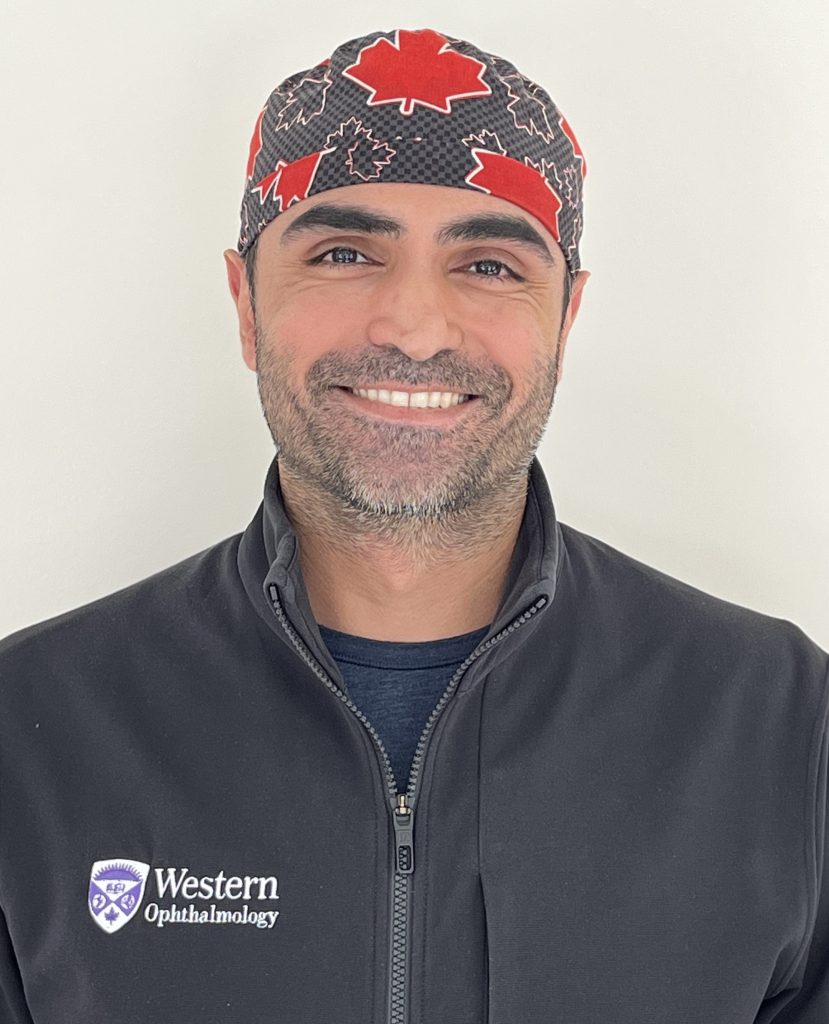
Dr. Munir Iqbal is pleased to announce the initiation of a Surgical Retina Fellowship program at the Ivey Eye Institute and Western University in London, Ontario
The fellowship will be 2 years in length, and will include exposure to clinical aspects of retina disease management. The fellow will have the opportunity to evaluate both new and existing patients. The pathology will include but not be limited to: Age-Related Macular Degeneration, Diabetic Retinopathy, Retinal Vascular Diseases, Uveitis, Hereditary Retinal Diseases, Surgical Retinal and Vitreoretinal diseases, including vitrectomy, retinal detachment surgeries, macular surgeries, complex IOL cases, scleral buckling techniques, suprachoroidal drainage, along with pre/post-operative management for surgical cases.
Goals and Objectives:
- To gain exposure and proficiency in the diagnosis and management of medical and surgical retinal conditions to prepare a candidate for a clinical academic career retinal surgery with subspecialty training.
- To obtain training in the appropriate use and interpretation of diagnostic tests, including:
• Fluorescein Angiography
• Optical Coherence Tomography
• Ultrasonography - To develop proficiency in a number of non-surgical procedures, including:
• Laser Photocoagulation
• Photodynamic Therapy (PDT):
• Intravitreal and subTenons injections of pharmaceutical agents: - To develop proficiency in surgical procedures, including:
• Vitrectomy
i. Retinal detachment repair
ii. Macular cases
iii. Vitreous hemorrhage
• Scleral buckling techniques
• Secondary intraocular lens cases - To provide exposure to the evaluation of patients with suspected malignancy, the ancillary testing and evaluation of treatment options and management.
- To develop skills for lecturing to colleagues and residents on various aspects of medical and surgical retinal disease.
- To develop critical appraisal skills and to be aware of current and completed research in the area of medical retinal disease.
Research and Education:
The fellow will be expected to be involved with retina related basic and/or clinical research. Projects will be outlined for the fellow and they will be expected to present this at a national or international meeting. Dedicated time for research will be scheduled into rotation blocks as described above.
The fellow is expected to enhance resident teaching and clinical discourse among the department. Presentation of interesting/educational cases at grand rounds is expected. The fellow will perform 2 grand rounds presentations per academic year.
Application Process:
Interested applicants should send their curriculum vitae as well as 3 recent letters of reference from surgical mentors directly to Dr. Munir Iqbal at [email protected] or Mia O’Neil at mia.o’[email protected]
Applications to the Fellowship Programs must include the following:
• Letter of Intent
• Up-to-date Curriculum Vitae
• 3 Letters of Reference
Eligibility Requirements for Canadian and International Medical Graduates:
• Candidates must possess a medical degree from a University recognized by the Medical Council of Canada (MCC)
• Candidates must have completed an Ophthalmology residency that is recognized by the College of Physicians and Surgeons of Ontario (CPSO)
• International Medical Graduates do not need to write additional exams, but must be approved by the PGME Office at Western University
For More Information and to Register Click here


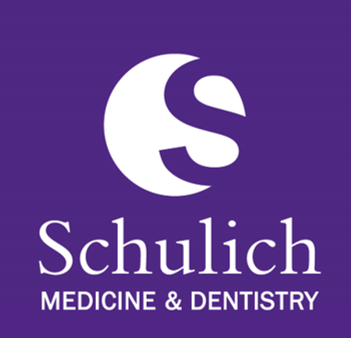
AstigMATIC: An Automated Vector Analysis Software
AstigMATIC is a free standalone application for automated standardized astigmatism vector analyses in corneal and intraocular refractive surgeries. AstigMATIC allows the simultaneous display and analysis of astigmatism magnitude and axis.
The software produces the four following graphs according to current journal standards: 1-Target-Induced Astigmatism Vector, 2-Surgically-Induced Astigmatism Vector, 3-Difference Vector and 4-Correction Index. Vector means with standard deviations are automatically calculated and displayed on the corresponding single-angle vector plots (0 to 180°). The standard graphs can be easily exported as high-resolution TIFF images for figures to use in production and presentations.
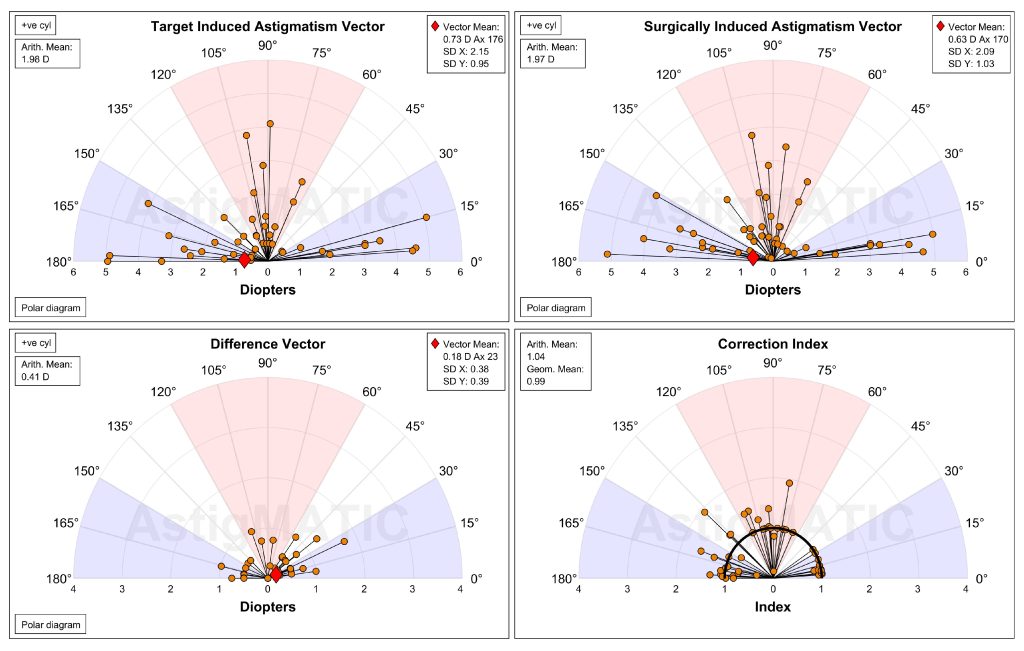
The software can be downloaded at:
https://www.lasikmd.com/media/astigmatic/index.php.
The software was thoroughly tested, peer-reviewed and published in BMC Ophthalmology, the paper about the software is available at: https://bmcophthalmol.biomedcentral.com/articles/10.1186/s12886-018-0920-1
For more information about the authors please visit their Research Unit website:
https://www.refractivesurgery.ca/
mEYEstro Automated Standard Outcomes Software
mEYEstro is a user-friendly software that automatically generates standardized graphs for refractive surgery outcomes – as prescribed by JRS, JCRS, and Cornea Journals.
The software produces the following 11 standard graphs; Efficacy: 1. Cumulative uncorrected (UDVA) and corrected visual acuity (CDVA), 2. Difference between UDVA and CDVA, Safety: 3. Change in line of CDVA, Accuracy: 4. Spherical equivalent (SEQ) to intended target, 5. Attempted vs. achieved SEQ, 6. Defocus equivalent (DEQ) accuracy, 7. Refractive astigmatism accuracy, 8. Target-induced astigmatism vs. Surgically-induced astigmatism, 9. Correction index histogram, 10. Angle of error histogram, Stability: 11. SEQ stability over time. Percent proportions, means, standard deviations, Cohen’s d effect sizes, and p-values are calculated and displayed on each graph. All graphs can be easily exported as high-resolution TIFF images for figures to use in scientific manuscripts and presentations.
The software can be downloaded at https://www.lasikmd.com/media/meyestro/index.php, and a tutorial is available at https://www.youtube.com/watch?v=NFlRRHx6ZaI.
Please note that our software was recently thoroughly tested, peer-reviewed and published in BMC Ophthalmology, the paper about the software is available at: https://bmcophthalmol.biomedcentral.com/articles/10.1186/s12886-023-02904-6
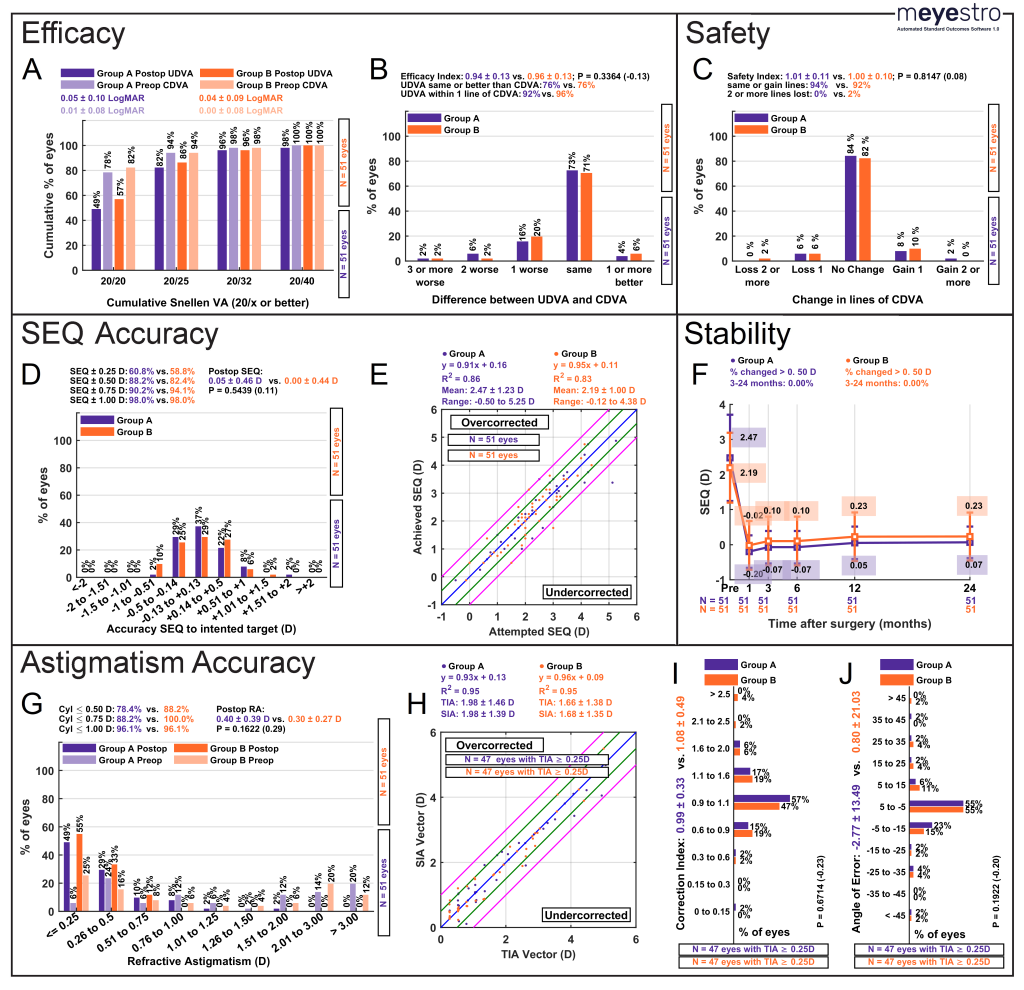
Organ Culture of Corneas and its Role in Eye Banking Economics
Date: Wednesday, November 30, 2022
Time: 4:00-5:30pm ET.
Presented by Dr. Graeme Pollock, Director of Lions Eye Donation Service, Centre for Eye Research Australia
Hosted by Gary Rockl, Tissue Innovation Specialist from Héma-Québec
The presentation will examine the technical aspects of organ culture of donor corneas and the benefits that may accrue through its adoption. It places this within the context of the forces affecting supply, demand and distribution of corneas in Australia.
• What are the technical requirements of organ culture?
• What are the benefits and disadvantages of the system?
• How does Australia approach national networking, self-sufficiency and sustainability in the provision of corneas for transplantation?
About the Featured Presenter:

Dr. Graeme A. Pollock, BSc (Hons) GCUT MPH PhD OAM
Dr Pollock is the Director of Lions Eye Donation Service at the Centre for Eye Research Australia, Melbourne. He has spent the past 30 years involved in eye banking at local, national, and international levels. Having been trained in pathology at the University of Melbourne, His association with donation and transplantation extends back to the 1980’s while working in organ preservation for transplantation. He completed his doctorate in this field at the University of Queensland and University of Cambridge. Graeme also holds a master’s degree in public health majoring in Health Administration from Monash University, and a Post-Graduate Certificate in University Teaching from the University of Melbourne.
His interests include medical standards and guidelines in the field of eye banking. He is a past Chair of the Eye Bank Association of Australia and New Zealand, past-President of the Australasian Transplant Coordinators Association, a member of the Medical Advisory Board of the Eye Bank Association of America and a founding member of the Global Alliance of Eye Bank Associations. In 2019 he was awarded an Order of Australia for service to corneal transplantation and education.
This meeting will be recorded for those who are unable to attend.

ESCRS Launches Online IOL Calculator
The developers’ goal was to create a free online tool that helps ophthalmologists aggregate the major online IOL calculators in one site, allowing them to get multiple results with only one data entry session.
“This will reduce typing mistakes, provide a better view, and allow users to compare results, eventually helping to get better refractive outcomes,” Dante Luis Buonsanti told EuroTimes.
The developers used a technique called web scraping. This is the sort of thing seen when using a hotel or air travel search engine. Web scraping uses bots to extract content from several websites and sends it to a single site. The user can then compare results from seven current calculators: Barrett Universal II, Cooke K6, Evo, Hill-RBF, Hoffer QST, Kane, and PEARL GDS. The site also “scraped” a comprehensive list of IOLs with optimized constants from IOL.com.
The ESCRS online IOL calculator is now live at iolcalculator.escrs.org.
Free slit lamp breath shields for your practice
March 25, 2020
Zeiss is giving all ophthalmologists 2 free slit lamp shields for free.
Access Details
To receive your free breath shield fill out the information required on:
https://www.zeiss.com/meditec/int/c/slit-lamp-breath-shields.html?vaURL=www.zeiss.com/breathshield
3 videos to MAKE your own slit lamp protectors
3 videos on how to make-it-yourself, universal slit-lamp and microscope shield for eye care professionals: ophthalmologists, optometrists.
https://www.youtube.com/watch?v=wvnx_KIUE9A
https://www.youtube.com/watch?v=pXm624pBDUM
https://www.youtube.com/watch?v=G5wxU2UV0nI
